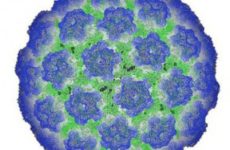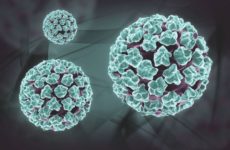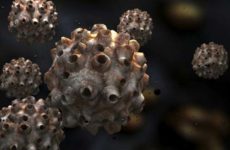Type 66 virus is an extremely dangerous infection that can provoke the occurrence of cervical cancer. You need to know the features and symptoms of HPV, since early diagnosis of the presence of the pathogen in the body and timely treatment will help to avoid complications.

Содержание:
Characteristics of papilloma, what kind of disease is it
HPV type 66 is a type of human papillomavirus. Such a disease belongs to a group with a high risk of oncology. Once in the body, this infection causes changes in the epithelial tissue.
Today there are more than 100 types of papillomavirus. Most people are carriers of this infection. Some of the existing types of the virus are not dangerous to humans. They appear as skin rashes and do not cause discomfort.
Stamp Features
When the type 66 virus enters the human body, it begins to change. As a result, pathological transformations of tissues are observed. The slightest failure in the body can provoke the degeneration of neoplasms resulting from mutations into malignant tumors.
HPV 66 may not manifest itself for a long time, especially in healthy women. But against the background of existing diseases, as a rule, there is an active reproduction of the virus and its further transition to oncology.
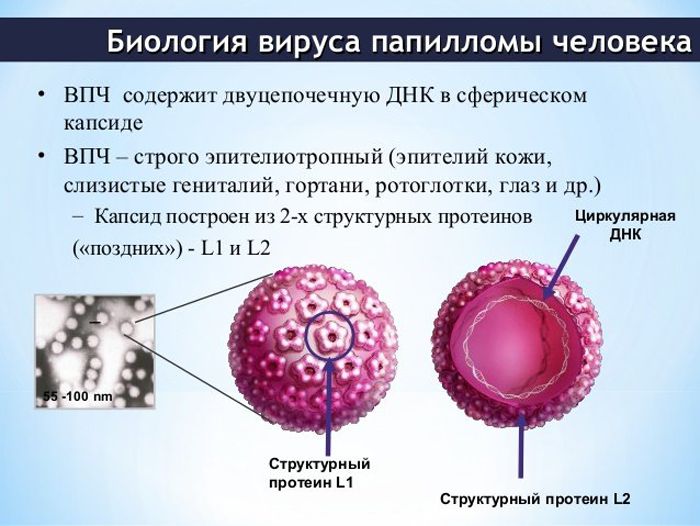
Possible causes of infection
HPV is one of the most easily transmitted diseases through sexual contact. This circumstance is explained by the features of the virus:
- its size;
- the possibility of infection through a kiss or protected sexual intercourse;
- absence of severe symptoms.
In men, the virus may not manifest itself in any way. And the more dangerous it is, because the risk of infection of the partner increases.
HPV type 66 is quite possible to become infected when using someone else’s towel or other person’s cosmetics. Therefore, there is a possibility of infection in public places:
- pools;
- gyms;
- saunas and baths.
There are a number of factors that increase the risk of infection with strain type 66:
- smoking;
- alcohol consumption in large quantities;
- stressful situations;
- constant lack of sleep;
- condition after an illness;
- treatment with antibiotics or steroid drugs;
- avitaminosis.
Why is papillomatosis dangerous for women and men?
HPV type 66 can be completely asymptomatic in women, provided there are no other concomitant diseases transmitted by PP.
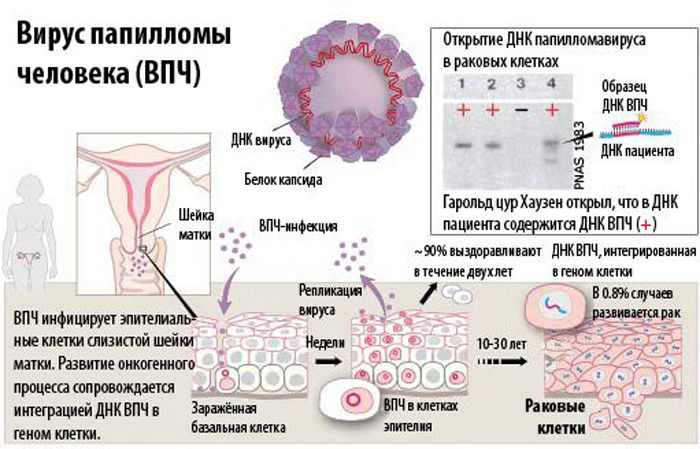
And it can manifest itself in the form of itchy sensations in the genital area. Often there are copious discharges that have nothing to do with the onset of menstruation, pain during urination, discomfort during intercourse.
The virus is dangerous because over time it can cause an oncological disease – cervical cancer. The mechanism of development of this disease is as follows.
HPV blocks special cells designed to protect against harmful microorganisms. As a result, the protective function decreases and the epithelium degenerates into precancerous formations – cervical dysplasia. If there is no necessary treatment, malignant tumors appear.
According to studies, type 66 virus is found in most women with cervical cancer. Patients with a hereditary predisposition to oncology should be especially careful in this matter, because for them the risk of developing the most unfavorable scenario increases.
Cervical dysplasia (in the presence of HPV type 66) can be provoked by:
- a large number of births;
- hormone therapy;
- prolonged use of intrauterine devices;
- hypervitaminosis;
- HIV infection;
- smoking;
- promiscuity;
- early initiation of intimate life.
Virus diagnosis
For the timely detection of HPV type 66, a woman should undergo regular examinations by a gynecologist (at least once every six months). If the doctor diagnoses dysplasia, then the following clinical studies are carried out:
- take a smear;
- do a scraping from the cervix and a blood test;
- take material for a biopsy.
Since a complete examination of the body is carried out, the type of HPV is established with 100% accuracy, and the stage of the disease is determined. Next, appropriate treatment is prescribed. With the timely detection of cervical dysplasia, the probability of a successful outcome is very high.
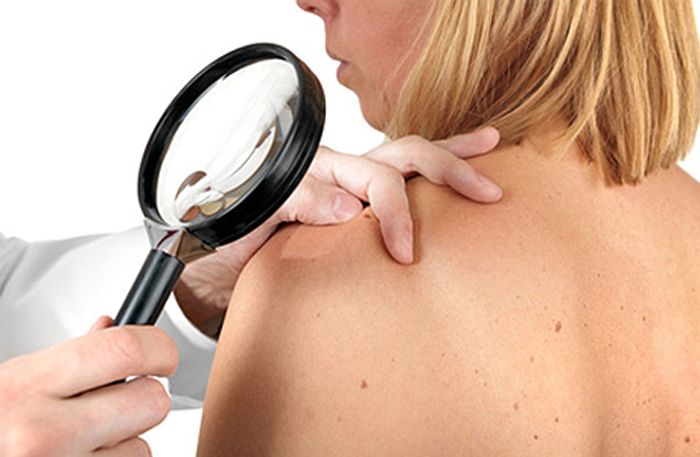
If a man is suspected of having the HPV virus , the patient should visit a urologist and / or proctologist and be tested.
How does the disease manifest itself?
Since many do not know how the human papillomavirus type 66 manifests itself, this makes it difficult to make a correct diagnosis in a timely manner.
It is good if, when a neoplasm is detected, a woman immediately consults a doctor and they find a type 66 virus in her. Then there will be a chance to carry out a full treatment on time, until changes in the uterus occur and cancer cells appear.
It is almost impossible to diagnose HPV type 66 on your own. This is due to the fact that warts are located in the vagina and it is difficult to detect them. However, there are indirect signs of the presence of an infection in the body, the manifestation of which should immediately contact a specialist:
- pain during intercourse;
- copious discharge;
- an increase in the number of SARS and other diseases.
During sexual intercourse, warts are injured. This results in pain and discomfort. Blood may even appear if the affected condyloma is large.
An injured neoplasm is attacked by various microbes, as a result of which it becomes inflamed and hurts all the time. As a result of inflammation, the discharge becomes more abundant – this is how the body gets rid of unwanted growth in the vagina.
After a certain time, a decrease in local immunity is observed. A woman begins to suffer more often from diseases caused by the presence of opportunistic bacteria.
Among all the microorganisms known to science that cause the formation of papillomas and condylomas, HPV type 66 has the least number of obvious signs of the disease. On the labia minora, visible condylomas occur extremely rarely. In men, the virus may not appear at all: in rare cases, condylomas form on the head of the penis (then there is a chance to receive timely treatment).
Principles of treatment
To date, it is impossible to completely defeat the papillomavirus , since effective drugs that can destroy its DNA are unknown to science. In the treatment, methods of therapy are used to eliminate the undesirable symptoms of the virus and the consequences of its presence in the body. Without fail, increase immunity in order to avoid relapses.
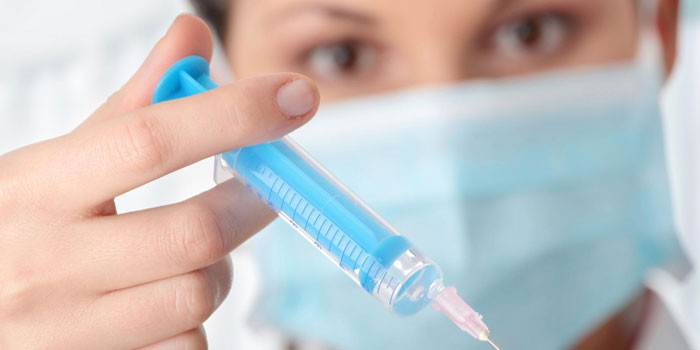
The most commonly prescribed drugs are:
- “Isoprinosine”.
- Solcoderm.
- “Podophyllin”.
In the case when, in addition to HPV type 66, a diagnosis of cervical dysplasia is also made, antiviral drugs , laser therapy, and electrocoagulation are prescribed.
But such procedures are quite effective only at an early stage of the development of the disease. If dysplasia is in an advanced form, then extreme measures are taken – conization of the cervix is prescribed or surgical removal of the reproductive organs.
If dysplasia is severe, then its treatment is not fast, it is carried out in most cases in a hospital, with a long recovery. After providing the necessary assistance, a woman should undergo regular examinations by a gynecologist: for 1 year – every 3 months, for 2 years – every 6 months, then – 1 time per year.
Prevention of papillomavirus infection
In order not to become infected with HPV, it is necessary to lead a healthy lifestyle, to give up casual sex. It must be remembered that the use of condoms does not give a 100% guarantee of protection against human papillomavirus infection: it is transmitted through secretions, including kissing.
It is important to have personal hygiene items (cosmetics, washcloth, towel, toothbrush). It is unacceptable to use other people’s things, even in the most extreme situations, because in order for HPV to enter the body, one close contact with an infected person is enough.
Since it is quite possible to become infected with papillomavirus in a public place (gym, sauna, swimming pool), before visiting such establishments, you should ask in advance about the disinfection methods used.
Conclusion
HPV type 66 is very dangerous for women: the virus can lead to cervical cancer. The infection does not die in the external environment and is easily transmitted from person to person. You can get infected even when using other people’s personal hygiene products. Therefore, it is important to take precautions to prevent this virus.




